The Medical Device Supply Chain: At What Stage of a Product’s Lifecycle Should You Bring in a CM Partner?
Your contract manufacturing partner can have a dramatic effect on the success (or failure) of your project. While an end-to-end CM can come in at any point of your production cycle, bringing them in at exactly the right time enables you to reap the greatest rewards, including:
What is the optimal entry point?
As we will see, the most advantageous time to bring in a CM is as early as possible in the design phase. Specifically, when you have your concept and strategy in place.

Why at the start of the preliminary design phase? Because this is the only time it is easy to make corrections and changes. Think of it as the starting line in a race. Except that in this race, if you fall, you can’t just pick yourself up and keep going. You need to go back to the starting line. The further you’ve gone, the longer the journey back and the longer it takes for you to ultimately reach your destination.
In this race, the ‘fall’ is any critical design failure. If the fall happens during the electrical or mechanical design phase you need to take a step back, but it is nowhere as serious as if the flaw is discovered during your first production run. In a worst-case scenario, the flaw reveals itself when your device has already reached the market. Consider that in 2020 alone, the FDA issued more than 30 medical device recalls. By this point it is way too late to start over.
Involving your CM partner at the optimal stage not only ensures that there are no falls in the race, but that the run itself is as fast and smooth as possible.
So why do some OEM’s still put off bringing in their CM partner until later (sometimes much later) in the process? Interestingly, the four most common objections only look at half the story.
Real concerns based on faulty assumptions
Do any of these sound familiar?
1
We can save on CM fees by bringing them in later.
Not if, when your CM finally does come onboard, they find problems that they could have helped you avoid in the first place. Returning to the starting line means paying twice to get to the same point.
2
We already have a lot of our own people providing input and opinions. Bringing in a CM this early will only add more cooks to the crowded kitchen.
Naturally involving more experts means there will be more voices. Design and development is exactly when you want people asking the right questions and making the right suggestions.
3
We don’t have time to engage a CM right now, our senior managers want us to get started as soon as possible.
What matters more, when the project starts or when it is completed? Your CM partner will be extremely careful to ensure that things are done right. This time investment at the start of the project means everything else will go much faster.
4
Why involve someone else when no one knows our business like we do.
When it comes to concept and strategy, there is definitely no one who understands your market better than you do. Your CM partner’s job is to turn your concept into the quality product you envision, reaching the market without cost overruns, with optimal efficiency.
Delaying the engagement of a CM partner boils down to two things: First, looking at immediate ‘wins’, which actually hide the greater, farther reaching benefits. And second, not really understanding the value that an end-to-end CM partner can bring to the table. Especially if brought to the table at the right time.
What Early CM Involvement Gets You

End-to-end expertise
Much like manufacturing itself, a supply chain is made up of many moving parts working in concert. From world-standard production facilities to high-end technology to teams of dedicated professionals, your end-to-end CM partner has all everything ready and working in unison to design, manufacture and even package your product so it is market-ready.

A single ‘control tower’
Any manufacturing project requires a capable project manager to coordinate between the numerous suppliers, engineers, departments and stakeholders, all with their own priorities. It involves a lot of running back and forth, and the more fragments of your project you outsource to different parties, the more difficult your project manager’s job.
On the other hand, when you hand the reins over to an end-to-end CM partner at the start of the design and development phase, there are experts and processes already under your CM’s umbrella. A dedicated team works closely with your people and known suppliers to ensure everyone is aligned in working toward the big picture.

A design that checks all the boxes
A completed design does not necessarily translate into a manufacturable product. When different engineers are involved in doing their best work within their own silos, all sorts of things can go wrong when it all finally comes together. Mechanical engineers may design a circular device with a diameter of 20cm, while the electrical team has designed a PCB that is 50cm long. Both designs fulfil their own requirements, but cannot possibly work together. Or your BOM includes components that are too tough or expensive to procure. Or the design of the component may mean it is likely to get damaged on a conveyor belt. Or scaling up production will greatly increase your cost per unit.
To ensure that your product can be manufactured, your CM runs a full spectrum of ‘design for excellence’ (DfX), including design for manufacturability. Armed with a profound understanding of manufacturing processes and materials, your CM partner will be able to identify and solve any issues early in the design stage.

Optimizing both product and production
Not only will your contract manufacturing partner identify flaws before they become costly headaches, but they can also recommend ways to lower production costs and increase speed to market.
Take your CM’s expertise in material selection, for instance. There are tens of thousands of types of plastic alone, each with a different set of properties that will affect how durable, light, flexible or easy to clean it is, whether it resists heat, pressure or certain chemicals, whether it bonds with other components, how easily it will be assembled. As early as the design stage, your CM partner will be able to recommend materials that will ensure your device meets all requirements for quality, safety and purpose. Other recommendations your CM might make at the design phase:
- Ways to reduce the number of parts in a device, thereby cutting costs
- Design to simplify assembly & verification
- Design to reduce set-up time
- Design to optimize product reliability
- Ways to future proof your device, for example, by keeping it relevant and useful – or easy to upgrade, when new regulations are introduced or different technologies are accepted.

Growth and innovations
The value of a solid relationship with your contract manufacturing partner extends far beyond your current project. Having someone you trust to make recommendations for better designs, materials and processes opens doors for future projects and innovations. Having a partner who can take care of everything from the design phase, through development and production, gives you the added advantage of getting your innovations to market faster than your competitors.
Would you like a copy of this post to share?
Other Featured Resources
About Providence Enterprise
Providence Enterprise is a Hong Kong medical device contract manufacturer of Class I and II medical devices with manufacturing in China & Vietnam. We specialize in electro-mechanical assemblies and high-volume disposables. We are FDA registered and ISO 13485, ISO 14971, ISO 14001, ISO 27001 certified. Our capabilities include fabricating tooling for silicone rubber and injection molded plastics, clean room injection molding, electronics, clean room assembly, and sterilization.















































